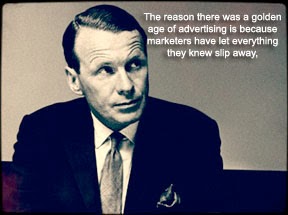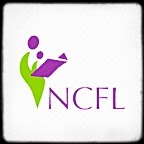As surprising at it will seem to many graphic designers, most communication professionals are unfamiliar with Sean Adams. They don't know he is a partner at AdamsMorioka in Beverly Hills.
They don't know he has been recognized by every major design competition and publication, ranging from Communication Arts to Graphis. They don't know he has had a solo exhibition at the San Francisco Museum of Art or that he teaches at the Art Center College of Design. And they don't know that he is president ex officio and past national board member of AIGA, assuming they have ever heard of AIGA.
They do, however, know some of AdamsMorioka clients. They include the Academy of Motion Picture Arts and Sciences, Adobe, Gap, Frank Gehry Partners, Nickelodeon, Sundance, Target, USC, and The Walt Disney Company to name a few. And on any given day, his work influences people not only in his profession, but also in the products, services, and experiences they choose to purchase.
So why don't more people know him or follow him on Twitter?
The reason is three-fold. First, the greater field of marketing and communication is so expansive and siloed that it is not uncommon for leaders inside different niches to never meet or even know of each other. Second, the number of people you 'know' isn't nearly as important as which ones. And third, this prevailing notion that social media is an indicator of influence is a lie.
There are much better ways leave a sustainable impact in a profession and blaze a trail that some people will undoubtedly recognize as a legacy that will inspire others. Adams has done that. And after hearing him speak a few weeks ago at a Mohawk Paper - AIGA Las Vegas sponsored event, it's exceptionally clear that he will continue to do so.
The wealth of information he shared about his career path, design philosophy, and business approach was only matched by his ability to connect with the audience. It's also the mark of a good teacher.
 It's also the mark of a professional who understood early on that in order to succeed in your career — particularly if it is anywhere close to marketing and communication (social media, public relations, design, etc.) — you have to be in it to win it. For Adams, that meant immersing himself in his profession as a leader in organizations like AIGA and at colleges like Art Center College of Design.
It's also the mark of a professional who understood early on that in order to succeed in your career — particularly if it is anywhere close to marketing and communication (social media, public relations, design, etc.) — you have to be in it to win it. For Adams, that meant immersing himself in his profession as a leader in organizations like AIGA and at colleges like Art Center College of Design.
It was through those organizations that Adams was able to immerse himself in his profession to learn, lead, and influence design. It's very similar to what I encourage students to do every year too.
The three most important sectors in which to become involved.
Years ago, I used to suggest that students, interns, and employees become involved in at least one professional and one civic organization. But at minimum, I no longer believe two is really enough to remain competitive. Three is a better number because many answers can be found outside the field.
1. Profession. Becoming involved in the profession is the easiest way to remain immersed in the profession. And there is no shortage of professional organizations in the field of marketing and communication, ranging from the American Marketing Association and American Advertising Federation to the International Association of Business Communicators and Public Relations Society of America. AIGA, by the way, is one of the oldest. It's celebrating 100 years this year.
Joining any one or two of these organizations (or related niche organizations) provides an opportunity to develop a professional network, discuss trends, and sometimes forecast changes to come. Don't stop at becoming a member. Become immersed by serving as a volunteer.
2. Industry. Since communication doesn't happen in a vacuum, it's also important to join an organization that isn't related to your profession but is related to your field. While many students seemed surprised to learn that some of their future peers join communication-related organizations but not organizations within their own industry, people in the field sometimes forget.
If you are working in communication for a bank, it's important to become involved in finance-related associations. The same holds true for emergency medical, hospitality, technology, or whatever. And for those that work at an agency or firm? They ought to survey a cross section of their clients and become involved in whichever industries seem prevalent.
3. Community. Last but not least, professionals who excel tend to give back to the communities where they live, work, and play. This almost always includes becoming involved with at least one nonprofit organization or civic agency that benefits their community. It's especially worthwhile for communication professionals too. There is no shortage of nonprofits that could use the help.
To be clear, any commitment ought to be in addition to the corporate philanthropy encouraged by the company. It's one thing to volunteer your time and talent to your office place, but quite another to make a personal commitment to an organization regardless of where you work. Pick something important to you and make a difference.
Good companies support professional and community involvement.
Every now and again, I meet people who tell me that their employers won't support it. If you find that to be the case, then you might be working for the wrong company. Savvy organizations know that the best professionals tend to be those who are involved and not isolated. Flex time is not negotiable.
By becoming involved in at least one organization in each sector, you will find out very quickly that influence isn't built by online scoring systems as much as the relationships you make offline first. Or, as Sean Adams said during his speech a few weeks ago: You have to be in it to win it.
They don't know he has been recognized by every major design competition and publication, ranging from Communication Arts to Graphis. They don't know he has had a solo exhibition at the San Francisco Museum of Art or that he teaches at the Art Center College of Design. And they don't know that he is president ex officio and past national board member of AIGA, assuming they have ever heard of AIGA.
They do, however, know some of AdamsMorioka clients. They include the Academy of Motion Picture Arts and Sciences, Adobe, Gap, Frank Gehry Partners, Nickelodeon, Sundance, Target, USC, and The Walt Disney Company to name a few. And on any given day, his work influences people not only in his profession, but also in the products, services, and experiences they choose to purchase.
So why don't more people know him or follow him on Twitter?
The reason is three-fold. First, the greater field of marketing and communication is so expansive and siloed that it is not uncommon for leaders inside different niches to never meet or even know of each other. Second, the number of people you 'know' isn't nearly as important as which ones. And third, this prevailing notion that social media is an indicator of influence is a lie.
There are much better ways leave a sustainable impact in a profession and blaze a trail that some people will undoubtedly recognize as a legacy that will inspire others. Adams has done that. And after hearing him speak a few weeks ago at a Mohawk Paper - AIGA Las Vegas sponsored event, it's exceptionally clear that he will continue to do so.
The wealth of information he shared about his career path, design philosophy, and business approach was only matched by his ability to connect with the audience. It's also the mark of a good teacher.
 It's also the mark of a professional who understood early on that in order to succeed in your career — particularly if it is anywhere close to marketing and communication (social media, public relations, design, etc.) — you have to be in it to win it. For Adams, that meant immersing himself in his profession as a leader in organizations like AIGA and at colleges like Art Center College of Design.
It's also the mark of a professional who understood early on that in order to succeed in your career — particularly if it is anywhere close to marketing and communication (social media, public relations, design, etc.) — you have to be in it to win it. For Adams, that meant immersing himself in his profession as a leader in organizations like AIGA and at colleges like Art Center College of Design.It was through those organizations that Adams was able to immerse himself in his profession to learn, lead, and influence design. It's very similar to what I encourage students to do every year too.
The three most important sectors in which to become involved.
Years ago, I used to suggest that students, interns, and employees become involved in at least one professional and one civic organization. But at minimum, I no longer believe two is really enough to remain competitive. Three is a better number because many answers can be found outside the field.
1. Profession. Becoming involved in the profession is the easiest way to remain immersed in the profession. And there is no shortage of professional organizations in the field of marketing and communication, ranging from the American Marketing Association and American Advertising Federation to the International Association of Business Communicators and Public Relations Society of America. AIGA, by the way, is one of the oldest. It's celebrating 100 years this year.
Joining any one or two of these organizations (or related niche organizations) provides an opportunity to develop a professional network, discuss trends, and sometimes forecast changes to come. Don't stop at becoming a member. Become immersed by serving as a volunteer.
2. Industry. Since communication doesn't happen in a vacuum, it's also important to join an organization that isn't related to your profession but is related to your field. While many students seemed surprised to learn that some of their future peers join communication-related organizations but not organizations within their own industry, people in the field sometimes forget.
If you are working in communication for a bank, it's important to become involved in finance-related associations. The same holds true for emergency medical, hospitality, technology, or whatever. And for those that work at an agency or firm? They ought to survey a cross section of their clients and become involved in whichever industries seem prevalent.
3. Community. Last but not least, professionals who excel tend to give back to the communities where they live, work, and play. This almost always includes becoming involved with at least one nonprofit organization or civic agency that benefits their community. It's especially worthwhile for communication professionals too. There is no shortage of nonprofits that could use the help.
To be clear, any commitment ought to be in addition to the corporate philanthropy encouraged by the company. It's one thing to volunteer your time and talent to your office place, but quite another to make a personal commitment to an organization regardless of where you work. Pick something important to you and make a difference.
Good companies support professional and community involvement.
Every now and again, I meet people who tell me that their employers won't support it. If you find that to be the case, then you might be working for the wrong company. Savvy organizations know that the best professionals tend to be those who are involved and not isolated. Flex time is not negotiable.
By becoming involved in at least one organization in each sector, you will find out very quickly that influence isn't built by online scoring systems as much as the relationships you make offline first. Or, as Sean Adams said during his speech a few weeks ago: You have to be in it to win it.






























